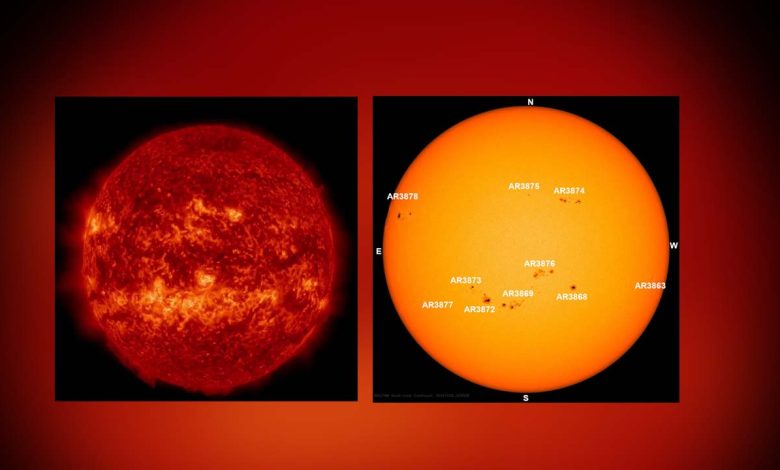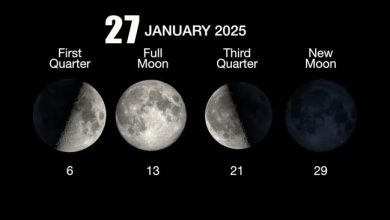There is a possibility of a big flare in 3 active regions on the Earth-facing side of the Sun.

Science: Three active regions on the Earth-facing side of our Sun are showing potential for some big flares. Sunspot regions AR3869, AR3872 and AR3878 all have the highest level of magnetic complexity, beta-gamma-delta, which means they are strong candidates for large M flares and even X flares. And two of these regions – AR3869 and AR3872 – are currently near the middle of the solar disk, so any sun-borne material they ignite will have a good chance of heading toward Earth. Stay tuned!
Last 24 hours: Two M flares in the past day have kept solar activity at a moderate level. Between 11 UTC yesterday and 11 UTC today, the Sun produced 13 flares. The other M flare was an M1.2 from AR3869 in the southeast quadrant on October 28 at 14:44 UTC. A similar R1 (minor) radio blackout was observed off the east coast of Brazil. The dominant flare producer of this period is again the active region AR3878, which blew eight flares. Ten active regions can be observed today on the Earth-facing side of the solar disk.
Next 24 hours: The probability of a C flare is 99%, the probability of an M flare is 75%, and the probability of an X flare is 30% today.
Next expected CME: No Earth-directed CMEs were observed in the available coronagraph imagery.
Current geomagnetic activity: At the time of this writing (11 UTC on October 29) Earth’s magnetic field is quiet. The shock from the coronal mass ejection (CME) from the X1.9 flare arrived as expected and perturbed the magnetic field to active levels. Unstable to active conditions are expected for the rest of the day today. Quiet to unstable conditions are expected tomorrow, October 30, as the effects of the glaring CMEs are waning.





